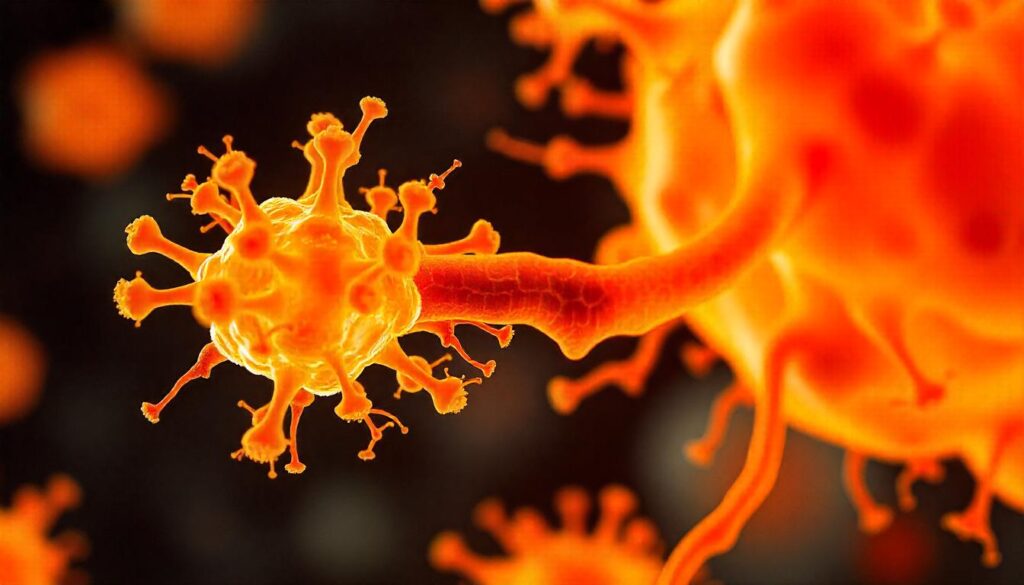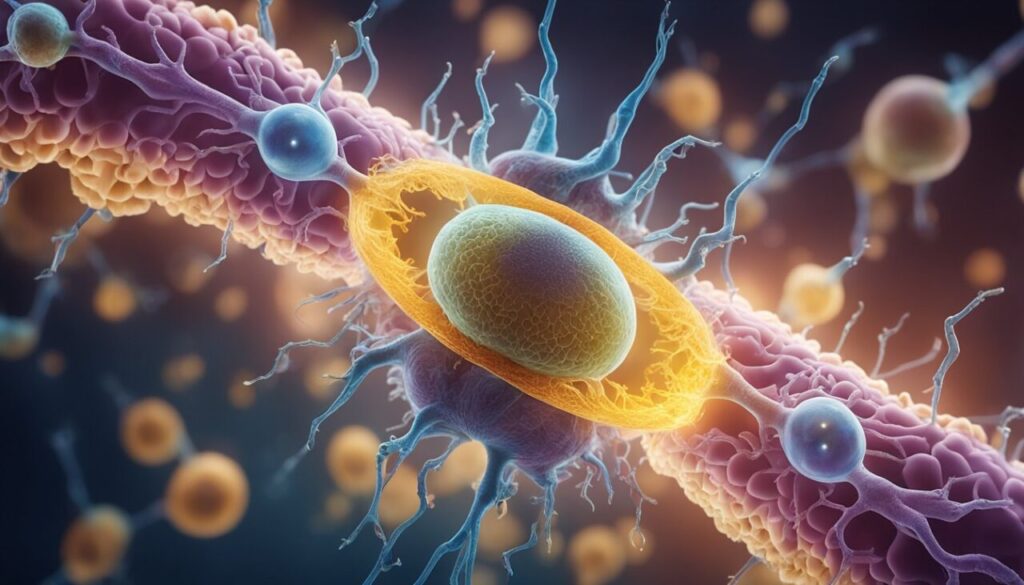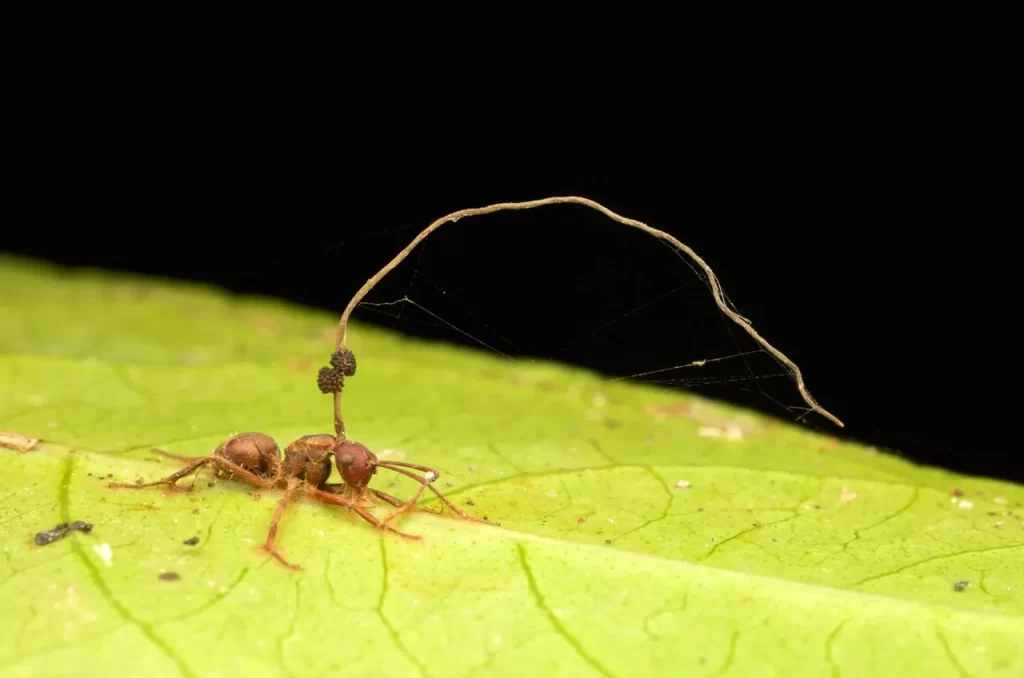
Science is supposed to be the world of cold, hard logic—a place where facts rule and superstition dies.
But sometimes, the facts themselves are stranger than anything we could invent. Some of these truths are really disturbing, sneaking just beneath the surface of what we consider normal.
So, if you’re comfortable with having your sense of reality a little shaken, let’s dive into the top 10 weirdest and creepiest scientific facts.
And trust us, once you know them, you can’t un-know them.
So, let’s start.
1. Your Body Is Covered in Mites—And They Mate on Your Face

Think of your face as prime real estate. It’s a big metropolis for Demodex mites, tiny arachnids that call your pores home.
These mites are microscopic, so you don’t notice them, but there could be hundreds living in the oily creases around your nose, eyebrows, and eyelashes.
During the day, they burrow deep into your hair follicles, feeding on the sebum your skin produces. But at night, when you’re sleeping peacefully, they crawl out onto the surface of your skin to mate.
This nightly routine is their entire life—mating, laying eggs, and dying. You might never feel them, but they’re there, carrying out their lives right on your face.
These mites have some unique characteristics. For one, they have no anus. Over their two-week lifespan, they store all their waste inside their tiny bodies.
When they die, this waste is released, right into your pores. The thought of all those mites dying and decomposing on your skin, dumping their contents into your face, might make you want to scrub your skin raw.
But don’t bother—they’re so tiny that no amount of washing will get rid of them completely.
That’s a good one for start, huh? Perhaps not weird fact but certainly disgusting.
Interesting fact: You’re not alone in hosting these mites. Almost every adult human has them, but they’re more concentrated in older people. Babies, interestingly enough, have very few, if any, of these mites, likely because their skin isn’t oily enough to sustain them.
2. The Most Toxic Substance Known to Man Is in Your Food

Botulinum toxin is perhaps the deadliest substance on the planet. It’s a neurotoxin produced by the bacterium Clostridium botulinum, and it only takes about 2 nanograms per kilogram of body weight to kill a person.
To put that into perspective, a single gram of this toxin could kill over a million people.
Despite its lethality, you might be closer to it than you think. It can grow in improperly canned or preserved foods, and if you ingest even a tiny amount, it can cause botulism—a condition that paralyzes your muscles, starting with your face and moving down to your respiratory system.
Without immediate treatment, it’s often fatal.
But here’s the twist: this toxin, in its purified form, is also used in one of the most common cosmetic procedures today—Botox.
Injected into the face, it paralyzes muscles to reduce the appearance of wrinkles. It’s also used to treat a variety of medical conditions, from chronic migraines to excessive sweating.
Nonetheless, despite its toxic origins, Botox is considered safe when administered correctly, though the thought of willingly injecting the world’s deadliest toxin into your face is something most people try not to think about.
Interesting fact: Botulinum toxin is also classified as a potential bioweapon due to its extreme potency and the difficulty of detecting it in food. In fact, just handling it requires special precautions, as it can be absorbed through the skin or inhaled.
3. You Can Be Allergic to the Cold

Most people really hate winter because of the cold, but for some, it’s more than just discomfort.
Cold urticaria is a rare condition where exposure to cold temperatures triggers a severe allergic reaction. The skin breaks out in hives, swelling occurs, and in extreme cases, the person can go into anaphylactic shock.
Imagine stepping out on a chilly day, only to find yourself gasping for breath, your face and hands swelling, your heart racing.
This isn’t a simple case of feeling cold; it’s your immune system going haywire, attacking your own body just because the temperature dropped a few degrees.
What makes this condition even stranger is that it can be triggered by anything cold, not just weather. Cold water, cold drinks, or even a cool breeze can set it off.
People with severe cold urticaria have to be incredibly cautious—they can’t swim in cold water, touch ice, or even go outside in winter without taking precautions.
And there’s no cure. Treatment involves antihistamines and avoiding cold temperatures, but that’s easier said than done if you live somewhere with a real winter.
Interesting fact: The exact cause of cold urticaria isn’t well understood. It’s not a traditional allergy, as it doesn’t involve the same immune responses as, say, a peanut allergy. Instead, it seems to be related to how your skin’s cells react to cold, but why this happens remains a mystery.
4. The Universe Shouldn’t Exist, But Here We Are

Physics tells us that at the moment of the Big Bang, equal amounts of matter and antimatter were created. When matter and antimatter come into contact, they annihilate each other in a burst of energy.
So, by all rights, the universe should have obliterated itself as soon as it began. The fact that there’s more matter than antimatter means that something very strange happened in the early moments of the universe, something that tipped the balance and allowed matter to dominate, leading to everything we see around us.
This isn’t just a theoretical puzzle—it’s one of the biggest mysteries in physics. If the balance had been just slightly different, the universe would be a vastly different place, or it might not exist at all.
Scientists have spent decades trying to figure out why this imbalance exists, using massive particle accelerators like the Large Hadron Collider to recreate the conditions of the early universe.
But so far, they’ve come up with nothing really significant We know that something strange happened, but what it was, we still don’t know.
Interesting fact: The imbalance between matter and antimatter is tiny—only one extra particle of matter for every billion particles of antimatter. That tiny imbalance is responsible for the existence of all the matter in the universe, from the smallest atom to the largest galaxy.
5. You Can Turn Into a Living Statue

Imagine your body slowly turning to stone, your muscles, tendons, and ligaments gradually transforming into bone, locking you into a rigid, immovable position.
This is the awful reality for people with Fibrodysplasia Ossificans Progressiva (FOP), an extremely rare genetic disorder.
FOP causes soft tissues in the body to ossify spontaneously, meaning they turn into bone. Over time, people with FOP lose the ability to move their limbs, their spine, and eventually, even their jaw.
The ossification process is relentless, and it’s made worse by trauma—any injury or surgery intended to remove the excess bone just triggers more bone growth.
Those affected by FOP often live in constant fear of bumping into something or falling, as even minor injuries can accelerate their condition.
Eventually, the body becomes a rigid cage, and life expectancy is significantly reduced. There’s no cure, and treatment options are limited to managing symptoms and trying to prevent injuries.
The disease is so rare that most doctors will never encounter a case in their lifetime, and it’s often misdiagnosed as more common conditions, like cancer.
Interesting fact: One of the earliest known cases of FOP was documented in the 18th century when doctors discovered a skeleton with a second skeleton fused onto it. Today, there are fewer than 1,000 confirmed cases worldwide.
6. A Virus Can Rewire Your Brain to Love Cats

Toxoplasma gondii is a single-celled parasite that’s notorious for its ability to manipulate the behavior of its hosts. It primarily infects rodents, and once it’s inside a mouse or rat, it rewires their brain to eliminate their natural fear of cats.
This makes the infected rodent more likely to be caught and eaten by a cat, allowing the parasite to continue its life cycle in the feline’s intestines.
What’s even creepier is that humans can also become infected with Toxoplasma gondii, usually by handling cat litter or eating undercooked meat.
And while the effects in humans aren’t as dramatic as in rodents, some studies suggest that the parasite can still influence our behavior.
Infected humans may experience subtle changes in their personality, such as increased risk-taking behavior, slower reaction times, and a greater likelihood of developing mental health disorders like schizophrenia.
Some researchers have even proposed that the parasite could influence human culture on a large scale, given that up to a third of the world’s population is estimated to be infected.
The idea that a tiny parasite could be pulling the strings behind our thoughts and actions is unsettling, to say the least.
Interesting fact: In France, the rate of Toxoplasma gondii infection is especially high, with estimates suggesting that more than 80% of the population could be infected. This has led to some speculation about whether the country’s famous love of cats might be influenced by the parasite.
7. Your Stomach Literally Dissolves Itself

Your stomach is a chemical cauldron, mixing with one of the strongest acids known to man—hydrochloric acid.
This acid is so potent that it can dissolve metals, and it’s essential for breaking down the food you eat. But this creates a problem: how does your stomach, made of flesh and tissue, avoid being digested by its own contents?
The answer lies in a thick layer of mucus that lines your stomach walls, constantly being replenished to protect against the acid’s corrosive power.
However, this system isn’t foolproof. When the mucus layer is compromised, the acid begins to eat away at the stomach lining, leading to ulcers.
In extreme cases, the stomach can actually begin to digest itself, causing intense pain and internal bleeding.
The body has to walk a fine line—producing enough acid to break down food, but not so much that it destroys the stomach from the inside out.
This balancing act is happening right now, every time you eat, and it’s a delicate process that most of us take for granted.
Interesting fact: The hydrochloric acid in your stomach is powerful enough to dissolve razor blades, but your body has evolved to handle this potent substance with remarkable efficiency. Even so, about 10% of the population will suffer from a peptic ulcer at some point in their lives.
8. Plants Can “Hear” Themselves Being Eaten

Plants might seem like passive, defenseless organisms, but they have some surprising ways of protecting themselves.
Research has shown that plants can “hear” the sound of themselves being eaten and respond by releasing chemical defenses.
They don’t have ears, but they can detect the vibrations caused by a caterpillar chewing on their leaves.
These vibrations trigger the plant to produce noxious chemicals that make it less palatable to the herbivore, essentially sending out a chemical SOS to ward off the attacker.
The idea that plants can sense and respond to their environment in such a sophisticated way challenges our traditional view of them as simple, passive organisms.
This ability to detect vibrations and react accordingly suggests that plants are far more complex than we give them credit for.
Some scientists even believe that plants could be capable of rudimentary forms of communication, using chemical signals to “talk” to each other and coordinate their defenses against predators.
Interesting fact: Plants can also differentiate between different types of vibrations. For instance, they can tell the difference between the sound of wind rustling their leaves and the sound of a predator munching on them, responding only to the latter.
9. You Could Be a Chimera Without Knowing It

The idea of a chimera—a creature made up of parts from different animals—belongs in mythology, right? Not exactly.
Chimerism occurs when a person has two sets of DNA in their body, usually because they absorbed a twin in the womb. This can lead to some incredibly strange situations.
For example, a person might have different DNA in different parts of their body, meaning a genetic test on their blood might produce different results than a test on their skin or hair.
In some cases, people have discovered that they’re chimeras only when their children’s DNA didn’t match their own, leading to bizarre legal disputes over maternity or paternity.
Chimerism isn’t just a curiosity; it can have real-world implications. In rare cases, it can lead to autoimmune diseases, as the body’s immune system might not recognize tissues with different DNA as “self,” leading to an attack on the body’s own cells.
It can also complicate organ transplants and blood transfusions, as matching DNA can become significantly more difficult. Despite its potential consequences, chimerism often goes undetected, lurking within a person’s body without ever being discovered.
Interesting fact: The phenomenon of chimerism has been documented in animals as well. For example, some cats have different eye colors because of chimerism, with each eye reflecting the genetic makeup of different cells in their body.
10. There’s a Fungus That Turns Ants Into Zombies

Nature is full of horror stories, and one of the creepiest involves the parasitic fungus Ophiocordyceps unilateralis. This fungus infects ants, taking over their nervous systems and forcing them to abandon their colony and climb to a high point, such as the top of a plant.
Once there, the fungus kills the ant and sprouts from its head, releasing spores to infect more ants below. The fungus is so precise in its control that it even forces the ant to bite down on a leaf or twig, securing itself in place before it dies.
This process is so gruesome and effective that it has earned the fungus the nickname “zombie-ant fungus.”
But what’s truly disturbing is the level of control the fungus has over its host. It doesn’t just kill the ant; it turns the ant into a tool for its own reproduction, controlling its behavior in a way that seems almost intelligent.
This has led some scientists to study Ophiocordyceps as a model for understanding how parasites can manipulate host behavior—a topic with unsettling implications for other, more complex organisms, including humans.
Interesting fact: There are hundreds of different species of Ophiocordyceps, each one specialized to infect a particular type of insect. This means that in tropical rainforests, where the fungus is most common, different species of ants, beetles, and other insects are all vulnerable to their own specific kind of “zombie” fungus.
Note: if you liked this article you might also like:




























